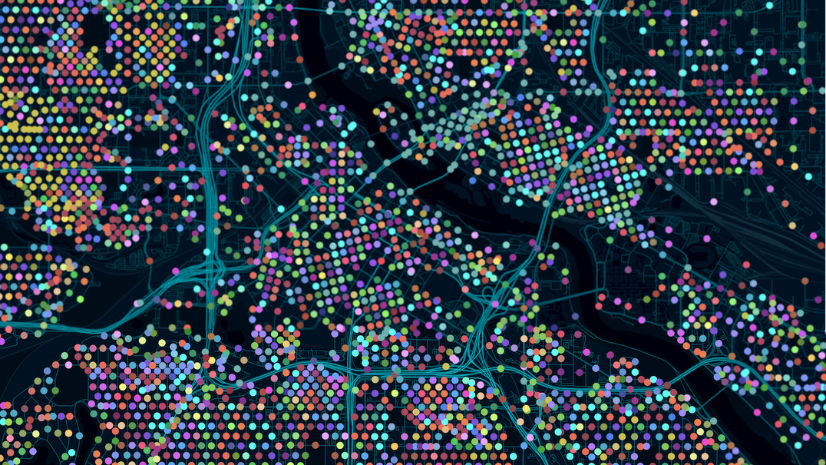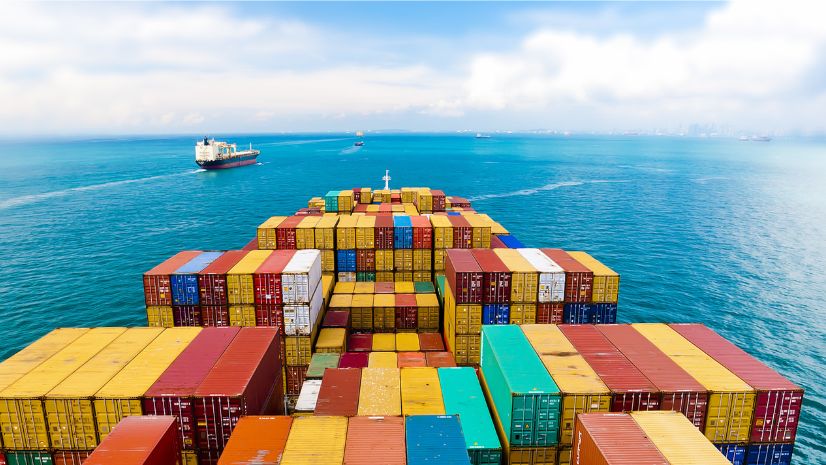Byline: Len Kne, University of Minnesota
This is part one of a three part series of the importance of a spatially fluent workforce
View: Blog 1 | Blog 2 | Blog 3 (coming soon)
Adapting a Workforce to the Speed of Change
The pace of change in business continues to accelerate. The competition is sharper, the markets feel smaller, and opportunities for growth feel harder and harder to find. This has created a strong need for a workforce that can quickly assess new information while having the confidence to make critical data-driven decisions to guide tactics and strategies. Significant advances in business intelligence and access to vast new sources of transactional-level data have created a tsunami of information that can overwhelm even the most experienced data science teams. It’s critical that companies can quickly analyze this flow of data from disparate sources to find the most meaningful and actionable insights.
Fluency in geospatial thinking and the application of geospatial technology provides the workforce with the tools that can unify disparate data. By using location as an unstructured join, they are able to find discrete correlations between data and business activities. Through the application of a geographic lens, they can ground their data in a physical context and unlock insights that are unavailable to their peers who are not using geospatial tools.
Describing the Need for Spatial Fluency in Business
This is the first article in a three-part series defining the need for spatial fluency throughout business over the next several weeks. The next piece will discuss why the modern, geospatially enabled workforce is crucial to all businesses. The final article will discuss how achieving a spatially enabled workforce is now not only possible, but a requirement for successful businesses both small and large.
Why Do Things Happen Where They Do?
Step one: pivoting how we think about business analytics.
We need to start thinking about analytics in a geospatial context. This means applying geospatial thinking to understand business activity, financial and customer behaviors, resource allocation, and risk assessment in the context of the location where these activities occur. By identifying correlations between an event and its location, insights are provided into why things happen where they do. This, in turn, allows us to better forecast where they might happen again in the case of a positive result, where we can influence a repeat of a good thing, such as a sale, implementing a new efficiency in our processes that reduces expenses. In the case of negative results, such as theft or natural disaster, it reveals how to identify the risk potential of an event earlier and faster, and then insight into how to mitigate the impact.
Examples of Geospatial Thinking in Business
Businesses that invest in developing geospatial fluency in their workforce have an advantage over their competitors that still use traditional analytics. Spatial fluency and geospatial tools can enhance and optimize almost every critical business capability, including sourcing raw materials, manufacturing, supply chain and fulfillment, customer analytics, location-specific range and assortment planning, and monitoring and reacting to sales and other critical KPIs.
Optimization
Business leaders are under enormous pressure to do more with less. This can mean better utilization of their existing resources or, in some cases, working with a reduced workforce or tighter budgets. To help solve this issue, businesses are looking for ways to optimize their workflows and enable their team members to do more while not just piling on additional work.
Optimizing Inventory Management in a Big-Box Store
The following is an example of how geospatial technology can significantly enhance optimization and workload efficiency.
Let’s use some napkin math to figure out how many units per day a big-box store in the United States sells. Without giving away sources, let’s use annual store sales of $50 million. For comparison, in 2023 in the United States, a typical Costco store sold $298 million per year, a Walmart store sold around $100 million per year, while a Target store sold around $54 million per year. Sales of $50 million translate to an average daily volume of $135,000. Translated to units, assume an average retail price of $10.00. That’s probably high for most big-box stores. That means on an average day, 13,500 units move through the store. Correspondingly, this means that the store team has to move at least that same number of items from the loading dock to the sales floor or from a backstock location to the sales floor. The bottom line is that there is a lot of freight moving around the store.

Zoning Freight Based on Location
Stores have been zoning their products for replenishment for decades. To optimize team members’ work and reduce the number of carts, dollies, and pallet jacks in the aisles, retailers will typically stage their incoming freight on the dock, in the truck, and in the backstock area by its location on the sales floor. Staging improves efficiencies when team members move product around the store. Even in this instance, a rudimentary application of spatial fluency is solving this optimization problem. The organization of incoming freight by where it’s going to eventually be merchandised on the sales floor helps the team members reduce time “looking” for the location of the merchandise. Retailers experience high turnover in their store teams, and giving staff direction on where items should be placed can really help reduce handling.
While this process works much better than just unloading a truck, packing a merchandise cart, and going out on the sales floor to restock the shelves in random order, there is a downside. In this process, data about where items are placed on the sales floor is stagnant. It is so because maps and locations for items and categories are manually generated and typically not updated when store layouts change. For example, planograms are flexed to accommodate inventory issues or account for seasonal sales. High employee turnover means team members may not know the sales floor well enough to be efficient in their merchandising efforts. Anyone who has tried to find a specific flavor of soup on a 48-foot run of canned soups and meal solutions at the grocery store can attest that it’s not always as easy as one might think.
To solve this, how can we provide the associate with specific directions about how to best stage items for replenishment and where their home location is by shelf and facing in the store?
The Curbside Revolution
For big-box retailers, this issue came to a head during the pandemic, when many retailers were scrambling to enable curbside pickup. They quickly realized that giving a team member a list of specific items from a customer’s order and having them navigate the aisles to pick those orders based on their knowledge of the store layout just didn’t scale.
Since they already know how to do this effectively in their warehouses and fulfillment centers, the question becomes: How can they apply that same methodology in their stores?
The data is there—enterprise resource planning (ERP) tools have this data, but it’s in different places and in disparate formats. Planograms and store adjacency maps have details about where every item in every store is, at least in planogramed categories, down to the aisle, fixture, shelf, and facing. Point of Sale (POS) and inventory management systems know what items are in stock and where additional inventory is located in the stockrooms.

Interrogating Disparate Data
This spatial data enables tools that can route team members through the store efficiently, alerting them when it’s time to stop and find the spot on the shelf for the item they’re picking or the slot where inventory systems think a stock-out can be found. It can tell them exactly where to look, what shelf, what section of the display, etc. Once they perform the action indicated, picking a customer’s order or restocking a shelf, the tool can send them to the next stop where the next action can be taken.
The spatial technology, in this case, indoor GIS, joins the item location data, the store map, and the team member’s location to calculate the most efficient route through the store to accomplish the list of tasks. This is a capability they use in their warehouses and fulfillment centers all day.
ROI—Hypothetical Back-of-Napkin Calculation
Imagine a general merchandise company with 1,500 stores—how much is a project like this worth?
Hypothetically, let’s say this chain with 1,500 stores pays its team members $20.00 per hour. Optimized picking and replenishment can save 10 hours a week in labor. That’s 1.4 hours per day. Given the number of items and “touches” required to pick products on the one hand and replenish them on the other, this is probably a low estimate. Saving 10 hours per week across 1,500 stores, with staff making $20.00 per hour, equals an annual savings of $15.6 million.
Spatial Fluency Drives Efficiency
But this is just the tip of the iceberg. Creating a workforce that is spatially fluent enables a new kind of thinking about how business operates. Team members inherently understand the relationship between spatial attributes and business operations. When that happens, the decisions they make and the tools they develop can have a significant impact on performance and bottom-line profitability. The next article in this series will talk about how spatial fluency can drive growth and improve overall performance.




